I have shared many of my favourite places and activities in Japan in this newsletter. However, as these reflect my personal preferences, they are undoubtedly biased.
So, this time, I asked five non-Japanese readers for their recommendations, and added my brief comments for each. Thank you so much to everyone who kindly contributed. If interested, please click on their names to visit their pages.
You may be planning a trip to Japan or prefer to enjoy Japanese culture in your own country. Either way, these recommendations will give you a sense of Japan's surprising diversity.
At the end of the article, I will ask you via poll which cities and activities you are most interested in. Please participate so that I can use your responses to help select future topics for Japan Uncovered!
Phil
British | Linux / Unix tester by trade | Hobbyist Photographer | INFJ | Forever learning Japanese | Interests: Music, Volcanology, Gaming, Japan
City: Sapporo, Hokkaido (北海道札幌市)
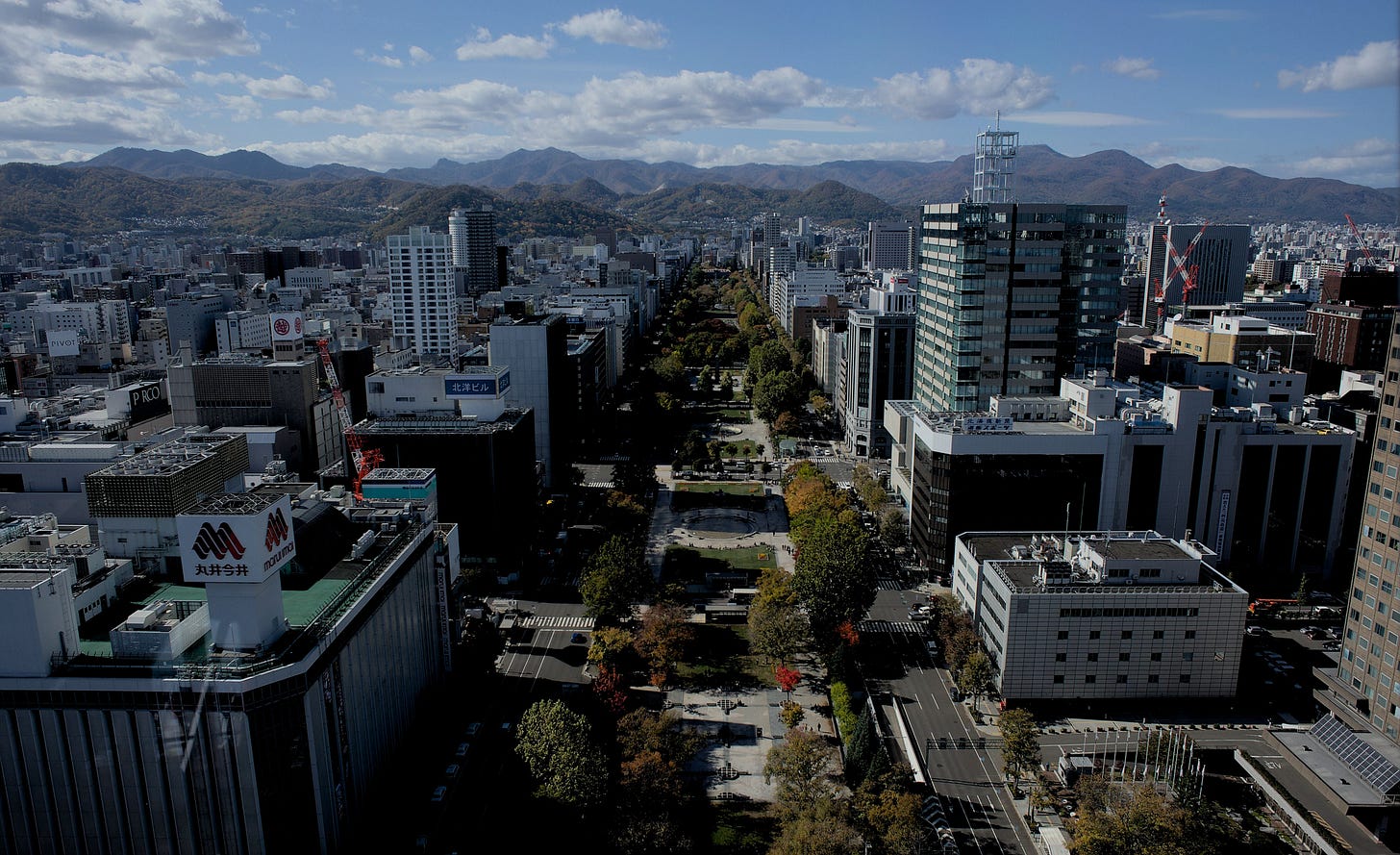
I was happy to call Sapporo my home for 2 years, and now I'd like to introduce it to you all. Sapporo still holds a special place in my heart. Surrounded by nature, including mountains, parks and rivers it has a lovely feel to it.
Every time I am in Sapporo, one of my favourite things to do is gaze at the scenery from the Sapporo TV Tower, which offers the best views that extend right to the end of Oodori park!
Another great place I visit to enjoy nature is Maruyama Park on the outskirts of the city, where I go to take photos of local wildlife such as squirrels and mice.
My favourite time of year for this is the Autumn where the leaves turn gold and fall like snow. My favourite attraction is Kaitaku-no-mura (Pioneering Village) just out of town - a historical open-air museum with various buildings. I love to take photos on film here as the old architecture looks great on film.
Sapporo is known for a fun dish called soup-curry, one my favourite Japanese dishes. It's a delightfully warming combo of soup and curry with vegetables and chicken and a spicy kick. As Sapporo sees 3-4 months of snow a year, this is a perfect meal you have to try when you visit. I hope you consider Sapporo for your next trip to Japan!
Activity: Winter in Hokkaido
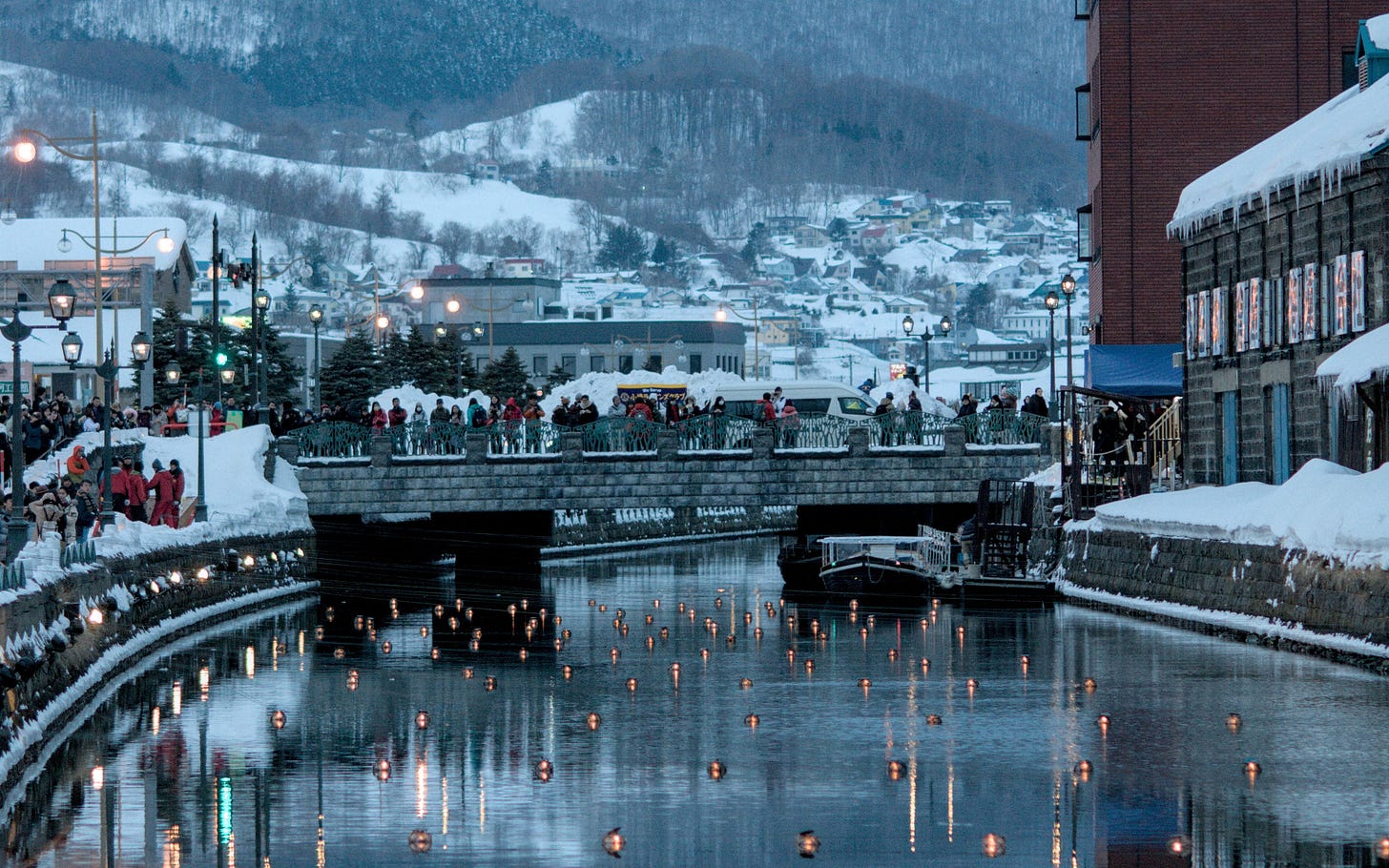
Winter in Hokkaido is undoubtedly my favourite season. Everything is covered in a beautiful sheet of white, and there are lots of opportunities for photos and cosy coffee breaks at my favourite coffee shop.
In February, Sapporo's annual snow festival takes over the city with impressive giant snow sculptures depicting scenes from anime to famous landmarks and people. Every year I look forward to browsing the artwork whilst keeping warm with a coffee or hot chocolate, along with some local fare from the variety of food stalls, selling everything from Yakiniku to churros!
Another event I really enjoy is 'Otaru's snow-lit path' (小樽雪あかりの路). Every year people come together to make hand-made lights that line the town of Otaru's canal way, creating a wonderful path of light. Thanks to the canal being frozen over and the snow covering the paths and buildings, it creates a magical-looking scene that is well-worth a visit.
These are just a few of my favourite things to do in the winter season in Hokkaido, but there are plenty of activities for winter-lovers - especially if you are into winter sports.
Yuri’s comment:
Phil chose Hokkaido, Japan's northernmost island. There are so many attractions, but the delicious fresh seafood is not to be missed…!!
Lisa Cunningham DeLauney
Change Catalyst, travel enthusiast, language and culture nerd, lover of nature and art. A consultant, educator, writer and illustrator, I help you design and navigate change.
City: Narita, Chiba (千葉県成田市)
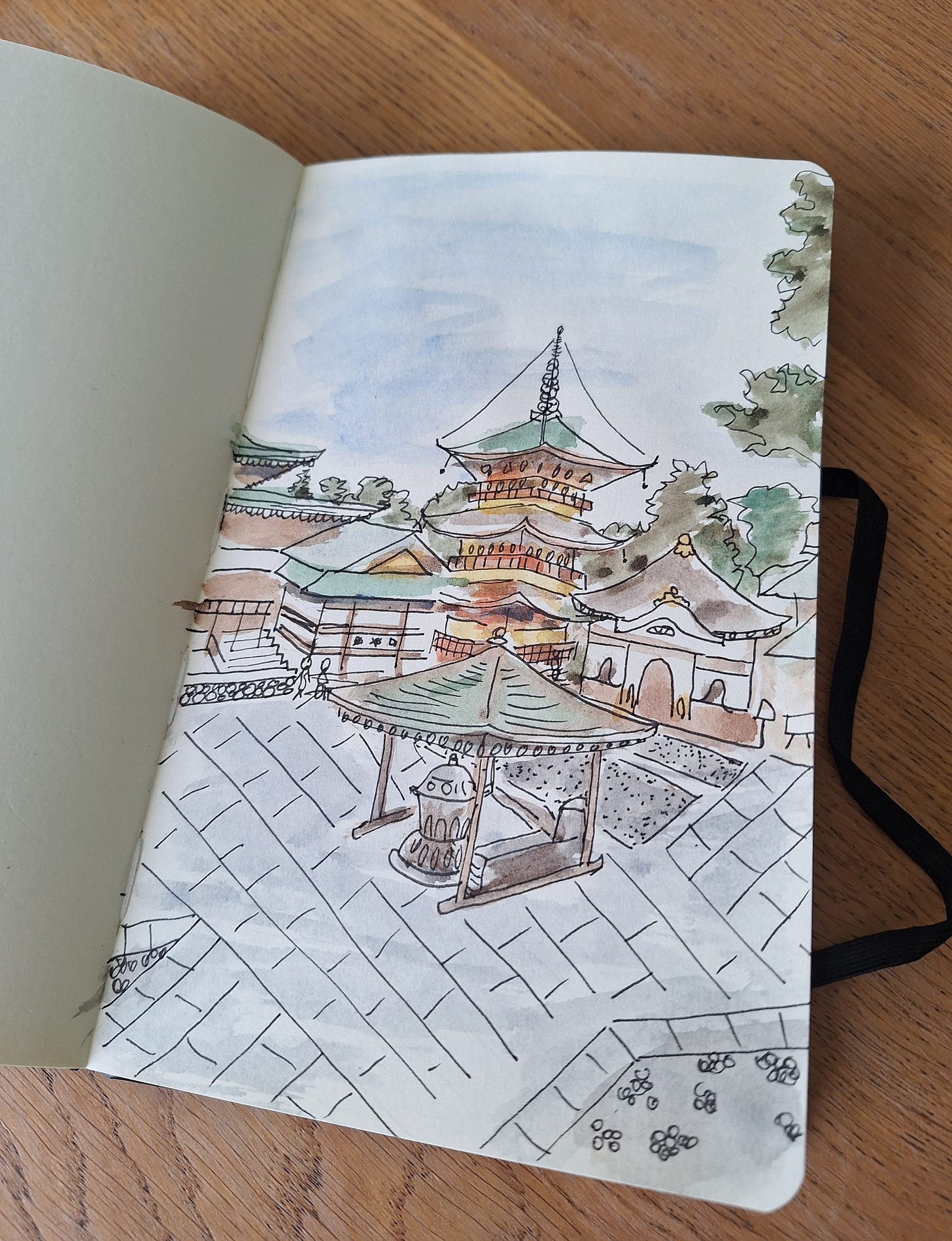
I have entered and left Japan through Narita airport many times. Tokyo is just over an hour away, on the Narita Express. But if you take the train straight to the airport you miss a wonderful opportunity to explore an often overlooked gem. And I should know - because I used to live in Narita.
Take a local train or semi-express, and hop out at Narita city, rather than the airport. Then stroll through the old town to the iconic Narita-san temple. Traditional wooden shophouses selling souvenirs and delicious meals line the cobbled streets.
I spent many happy hours wandering around the Buddhist temple complex with various pagodas, halls, gates and an atmospheric lake. No wonder it is beloved by many Japanese people and particularly popular at New Year. Narita is much more than an airport to me.
Activity: Feel like a character in an Hokusai print by exploring Enoshima

Crossing the causeway to the sacred island of Enoshima by foot, just like the pilgrims in Edo-era Japan. The island remains mostly car-free. Climbing the ancient stone steps leading to the shrine at the top, I stopped to buy a drink and snack at a traditional wooden shop. The forest, shrine, breathtaking views and atmospheric caves have not changed much over the years.
And from the viewing platform, I got a glimpse of Mount Fuji. Majestic as ever in the hazy distance across the bay.
But it can be good to mix the modern with the traditional. Japanese travellers in Hokusai's time probably never imagined that hundreds of years later, many visitors from all over the world would be climbing the same stairs.
Yuri’s comment:
Ukiyo-e artists such as Katsushika Hokusai and Utagawa Hiroshige depicted many famous spots that look like postcards. Lisa's idea of experiencing that world is unique and fun!
Richard Harrison
I’m a Brit living in Nishinomiya Japan.
Nishinomiya, Hyogo (兵庫県西宮市): A City of Baseball, Beauty, and Surprises
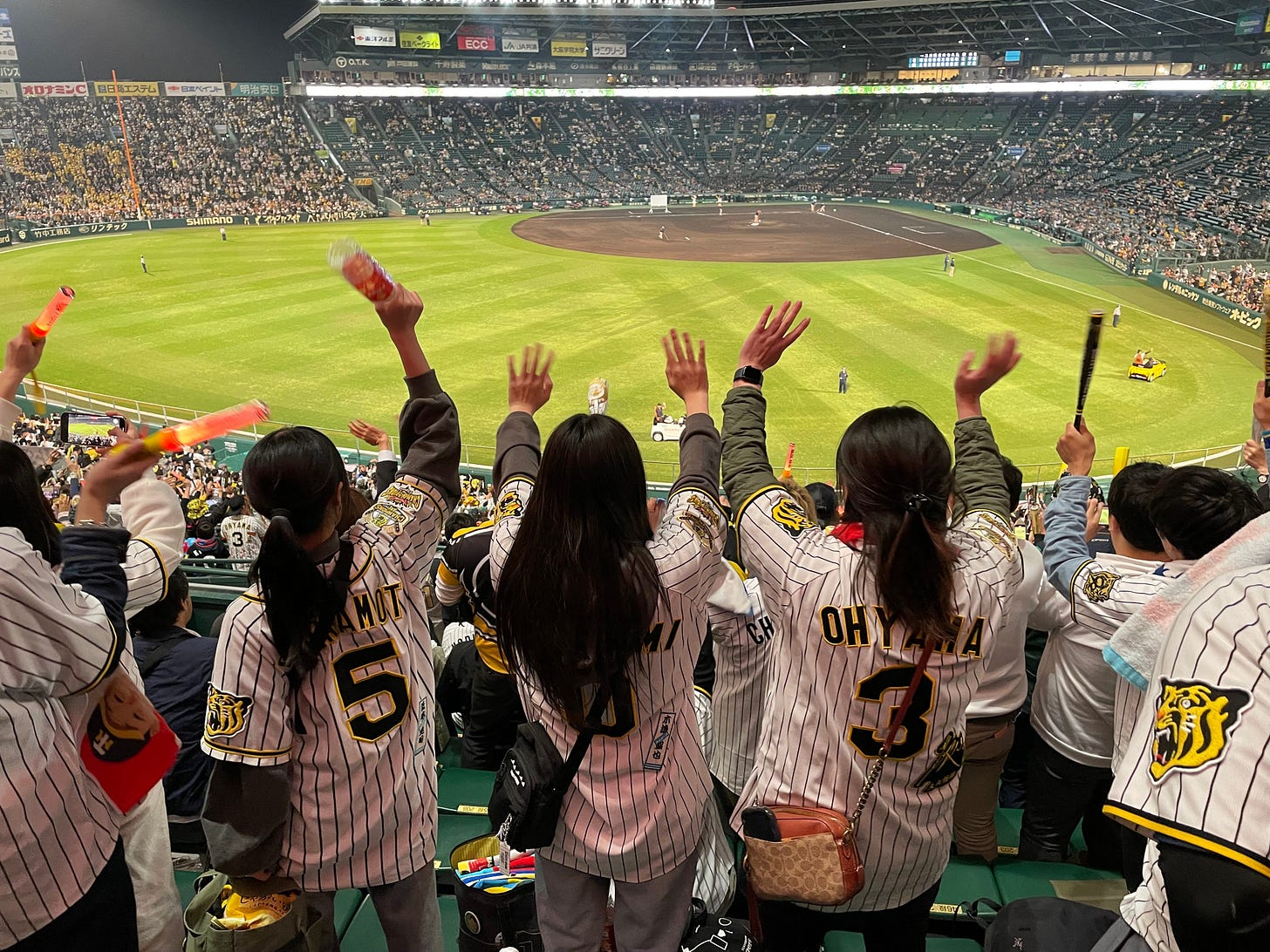
If you love baseball, Nishinomiya is the place to visit. It’s home to the legendary Hanshin Tigers, and also hosts the famed high school baseball tournaments every spring and summer. Even when there’s no game, a visit to the baseball museum is a great way to see how baseball took root here in Japan.
Nishinomiya has several beautiful shrines worth visiting. Nishinomiya Shrine, dedicated to Ebisu, the god of good fortune, is lively during the famous “Tōka Ebisu” festival in January. My personal favourite is Hirota Shrine which offers a more secluded and spiritual experience, with its ancient trees and elegant wooden architecture, it’s a lovely spot for a reflective walk or a moment of calm.
If you like walking, the Kabuto-yama hike is a local favorite. It’s a gentle climb with rewarding views of the city and Osaka Bay.
Whether you’re into sports, nature, history, or just wandering new places, Nishinomiya has a little bit of everything - often in the most unexpected corners.
Cycling the Shimanami Kaido: A Peaceful Island Adventure
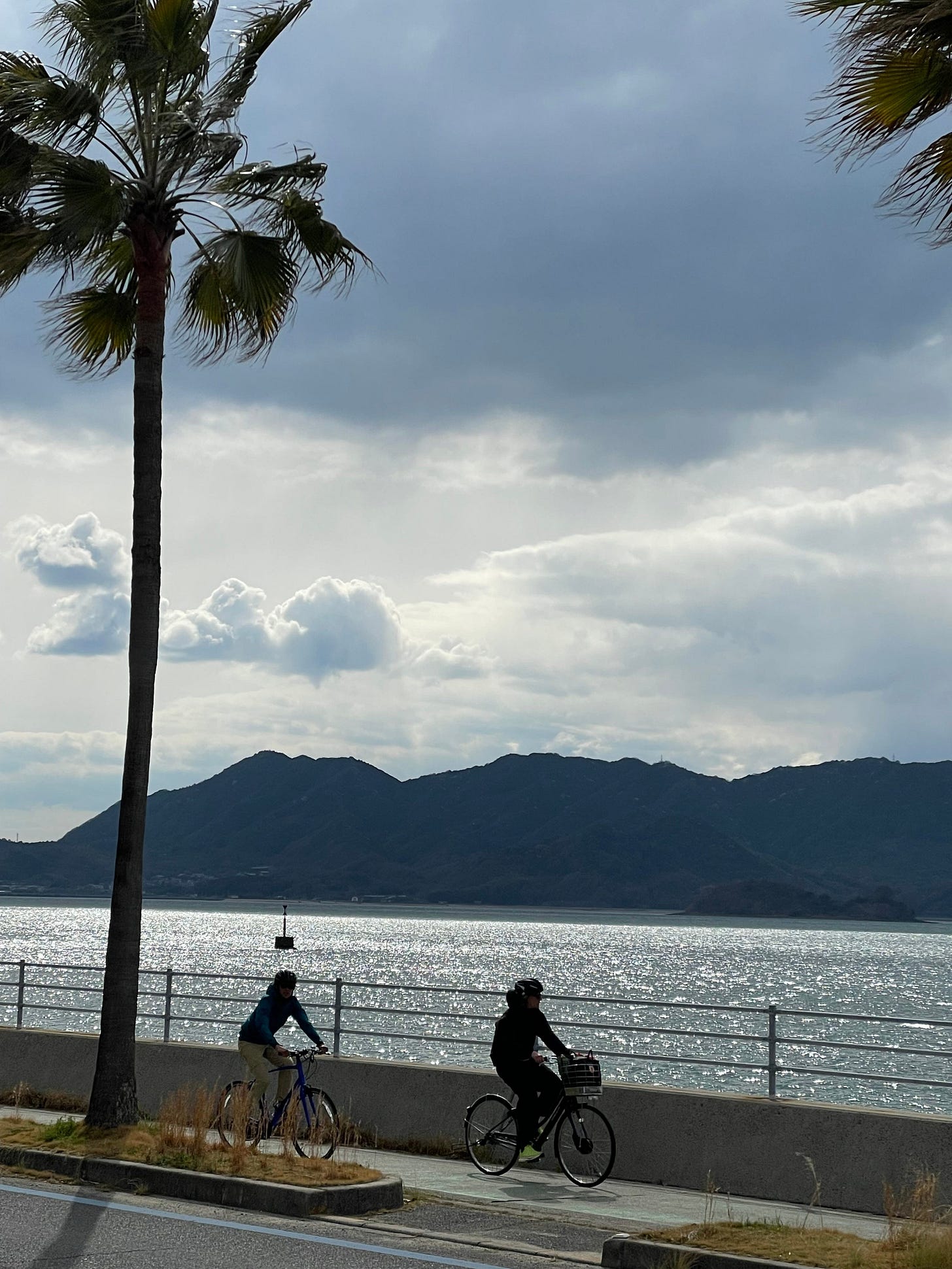
Looking for a different way to enjoy Japan?
The Shimanami Kaido - a 70-kilometer route connecting Honshu and Shikoku across six islands in the Seto Inland Sea - offers a unique cycling experience. Starting in Onomichi, the path winds through citrus groves, quiet fishing villages, and along stunning bridges with wide-open sea views.
My favourite part of the ride was riding across the Kurushima-Kaikyō Bridge, where the ocean stretches endlessly in every direction. The route is beginner-friendly, with rental bikes (including e-bikes) and plenty of rest stops.
Whether you’re into nature, food, or simply slowing down, this ride offers a fresh way to experience Japan’s beauty - one gentle pedal at a time.
Yuri’s comment:
Richard recommends the beautiful Shimanami Kaido! It has about 140 rest areas called ‘cycle oases’ where you can refill your water bottles and use the restrooms.
Ashleigh at Travel Bugg
After visiting 50 countries in 15 years, my love of travel has only grown. My goal is to help others travel, too, regardless of income or nationality.
City: Himeji, Hyogo (兵庫県姫路市)
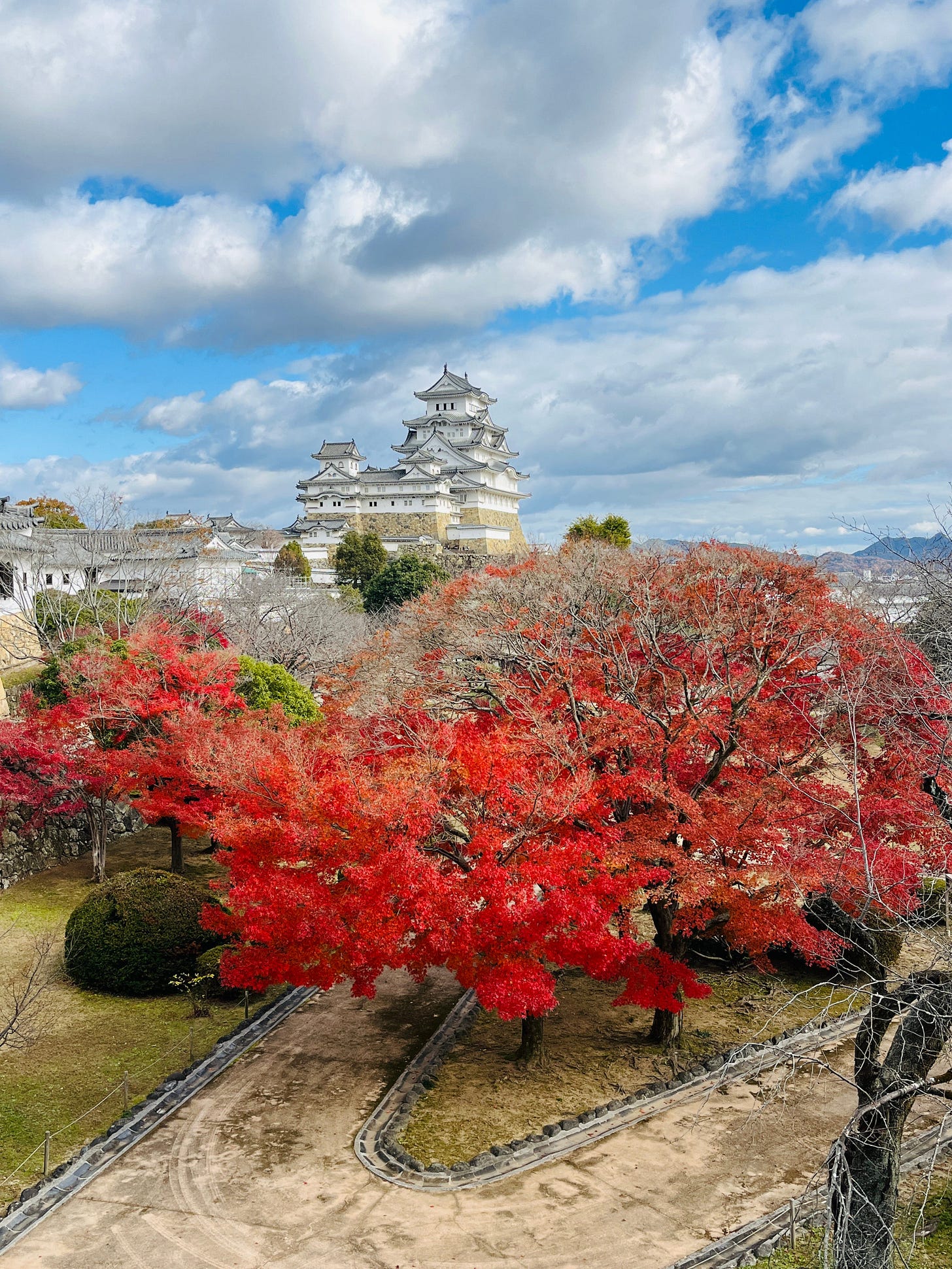
It’s a popular day trip from Osaka or Kyoto to travel to Himeji, home of Japan’s largest and most visited castle. Many tourists spend only a few hours around the castle grounds before heading on to farther destinations like Hiroshima. However, Himeji is a fascinating place in its own right, and it’s worth spending a night or two exploring its surroundings.
After seeing Himeji’s castle, you have a wealth of options including visiting gorgeous gardens and quirky museums, or going on nearby nature excursions. I highly recommend the Koko-en Garden during the fall and the Miki Museum of Art. Near the coast, you can go clam digging or eat fresh fish at the Himeji Maedore Market.
Visitors may also try various foods throughout the city including sea eel (anago). Himeji is the birthplace of almond toast, and I walked to a cafe about 30 minutes from the city center to taste this simple, but yummy, brunch dish.
Himeji is an ideal stop for solo travelers, couples, and families alike. I love the feeling of walking around at night, after the daytrippers have left, and the city is coming alive again. With the castle illuminated and uncrowded, you understand the magic of Himeji and remember why you made the trek here in the first place.
For more information, visit here.
Activity: Forest Therapy (Shinrin-yoku)

Need a break from Japan’s crowded, big cities?
Japan has several “forest therapy bases,” certified escapes from the hustle of urban life. You can set up your experience in places like Okutama Town in Tokyo, or Aki Ota Town, about an hour from Hiroshima City. There, forest therapy guides will tailor a program for your health and well-being. With around 70% of the country covered in forests, it’s a welcome break to walk among the trees.
While in Tokyo, I took a train trip to the village of Hadano, not far from Hakone. Here, I hiked along a “forest therapy road,” with exceptional views of Mount Fuji—except without any crowds.
Organizations like the Forest Therapy Society conduct “psychological and physiological experiments” before determining the best forest therapy roads. Taking one of these paths in Hadano was beneficial for my mental health and a major highlight of my time in Japan.
For more information about forest therapy, visit here.
Yuri’s comment:
My maternal ancestors were samurai, and they worked at Himeji Castle, which Ashleigh captured beautifully in her photo.
Julian Smith
I've lived in Japan for 15 years and walked all over the place. I thought it was time to put some of the things I've walked past and seen on (digital) paper.
City: Kumamoto (熊本県熊本市)
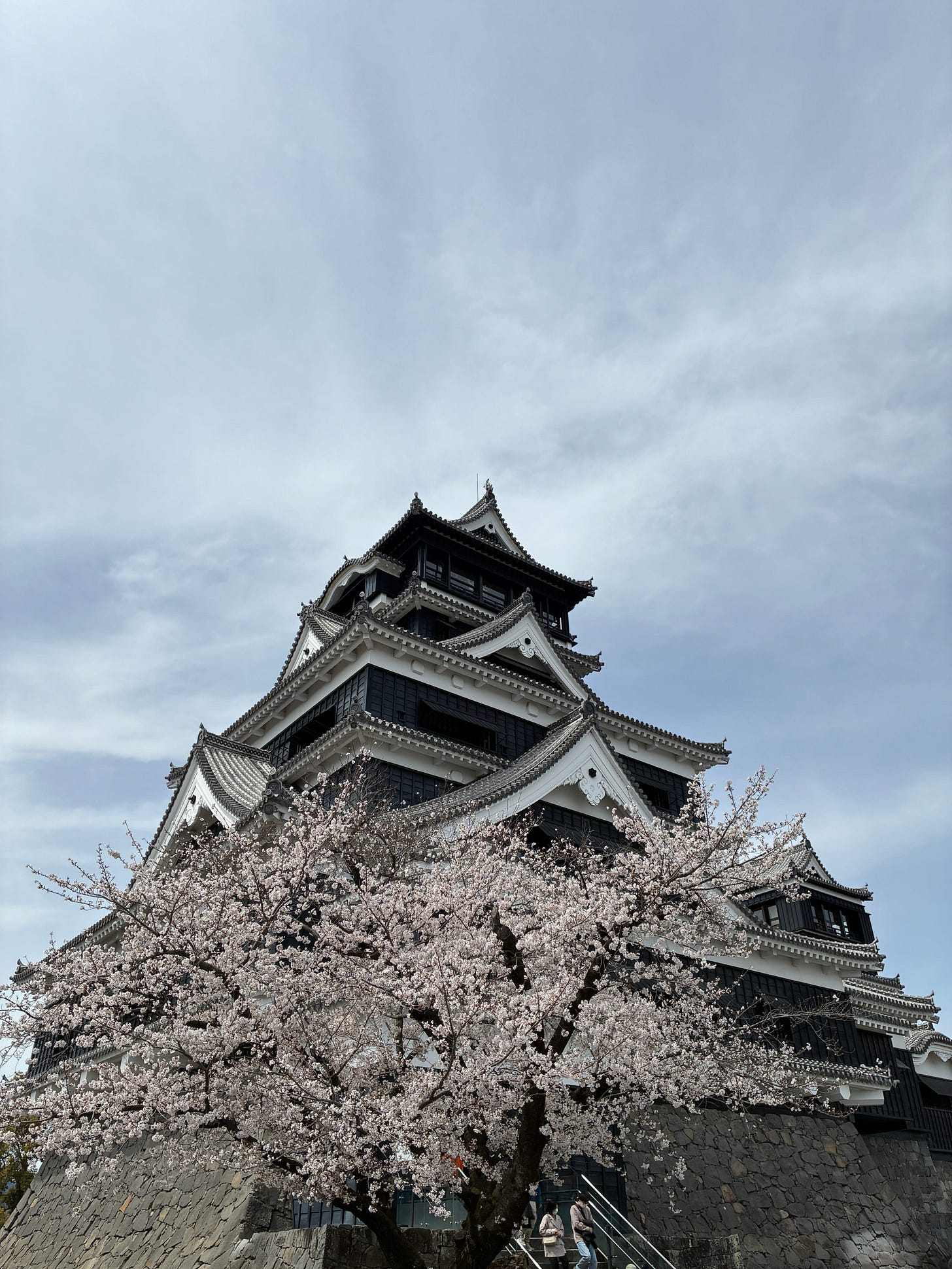
As soon as you get off the train in Kumamoto, you feel this is a city that really wants tourists. There are helpful guides to usher you to the quaint trams that trundle to the city centre.
Then, I was surprised to be accosted in the entertainment district from two sides - one encouraging me to go into a soapland, the other to give me an English guide to the entertainment district. This never happens in other Japanese cities!
Kumamoto Castle may be undergoing refurbishment, but the inside has a great museum, and I marvelled at the views over to Mount Aso with puffs of steam from its crater.
Activity: Hiking
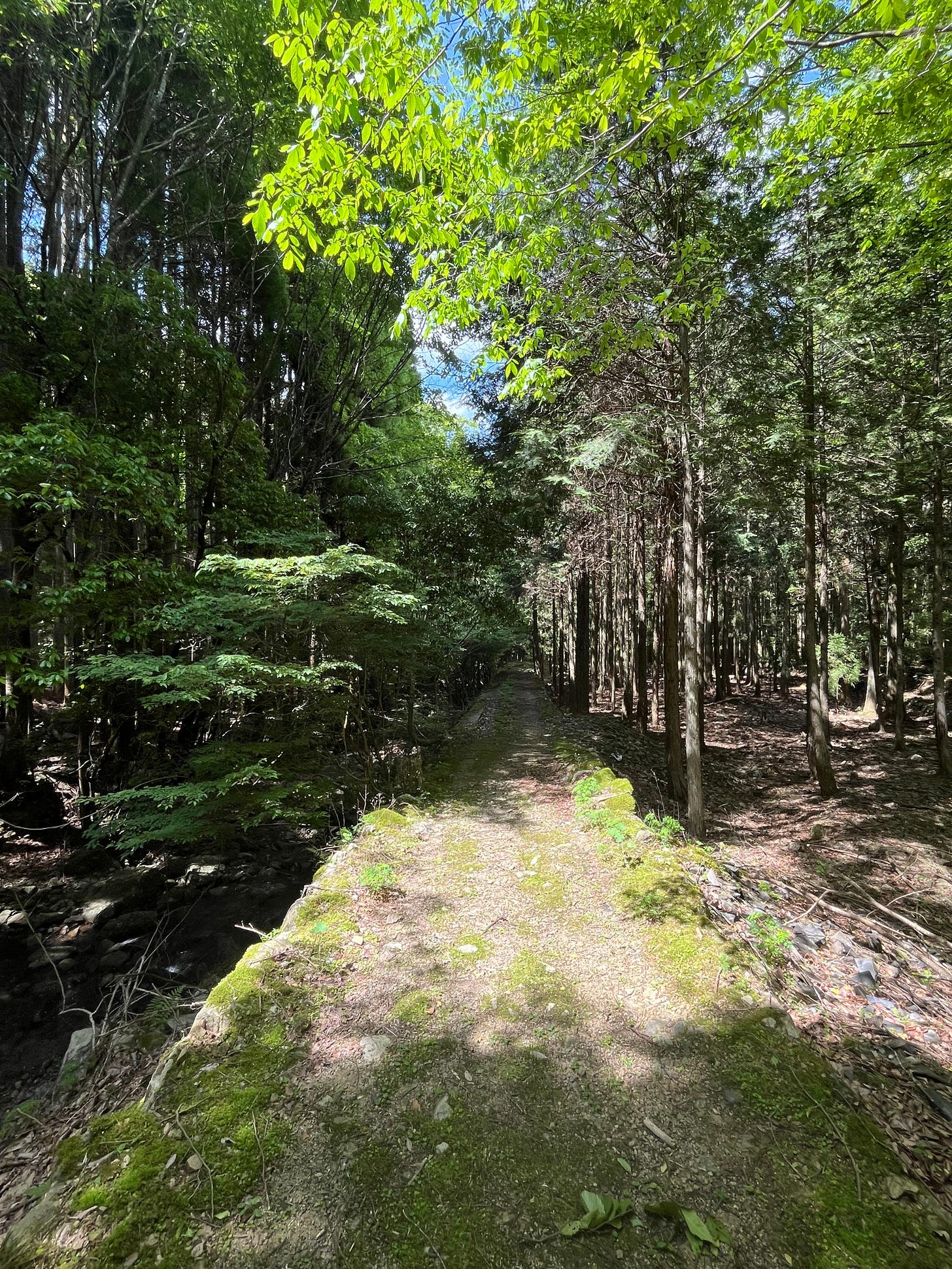
If you love doing linear hikes rather than circular ones, Japan is a joy. Great public transport means you can always get to the start and end of your hikes without the fear of getting stranded.
There's so much to explore: I've been amazed by stunning views, calmed by the dappled sunlight of forests, entranced by old shrines and spooked by the rattle of bamboo groves. The ever-changing seasons are accompanied by changing sounds and smells: the muddy-aniseed smell of waterlogged rice fields, the croak of frogs, the cacophony of cicadas, and the hiss of wind through winter pines.
If you're looking for a variety of landscapes in Japan, and just have basic hiking gear, its network of shizen hodo (nature trails) provide these. For a more spiritual experience in the deep forests of the Kii Peninsula, I recommend the Kumano Kodo pilgrimage trails around Hongu.
Yuri’s comment:
Many friends of mine love hiking in Japan, just like Julian! It is customary to say ‘Konnichiwa’ when you pass other hikers and ‘Osakini’ when you overtake them.




I agree completely with the Shimanami recommendation. It's a wonderful ride and there are plenty of detours you can make if you want to. We cycle there frequently.
I haven't experienced any of the other places mentioned so I have a lot for the list!